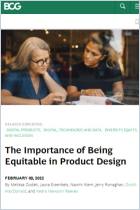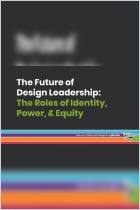Rejoignez getAbstract pour lire le résumé !

Rejoignez getAbstract pour lire le résumé !
Kat Holmes
Mismatch
How Inclusion Shapes Design
MIT Press, 2020
Aperçu
There’s a compelling business and moral case for inclusive design; get practical advice on how to achieve it.
Recommendation
Kat Holmes takes an underserved component of the diversity and inclusion genre and does it great justice in this slim volume. Though often overlooked, inclusive design has the potential to change the world. As Holmes points out, it already has through inventions such as touchscreens and email – originally designed to aid a small minority of disabled users – that now serve as standard tools for all. Nevertheless, most design continues to exclude, intentionally or not. Those involved in creating products will find a compelling and urgent case for inclusive design and practical tips for getting there.
Summary
About the Author
One of Fast Company’s Most Creative People in Business, Kat Holmes founded and leads Mismatch.design, where she advises firms on inclusive design.






















Comment on this summary